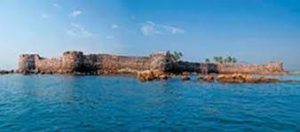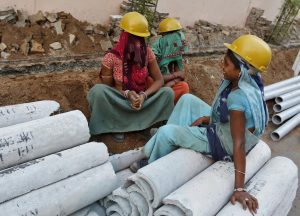Today’s Current Affairs: 1st Dec 2023 for UPSC IAS exams, State PSC exams, SSC CGL, State SSC, RRB, Railways, Banking Exam & IBPS, etc
Table of Contents
Secondary Evidence Under The Indian Evidence Act, 1872 : Principles Relevant For Examining The Admissibility

The Supreme Court recently explained the principles relevant for examining the admissibility of secondary evidence under the Indian Evidence Act, 1872.
- It is covered by Section 62 of the Evidence Act and is considered the highest class of evidence.
- Primary evidence, also known as best evidence, refers to the actual documents produced for the court’s inspection.
- It is admissible without prior notice and takes precedence over secondary evidence.
- As per Section 62, when the document itself is produced for the inspection of the court, it is called the primary evidence. If the document is in parts, then each part forms the primary evidence.
- Example: Birth Certificate issued by a government authority.
Secondary Evidence under the Indian Evidence Act, 1872:
- It is defined under Section 63 of the Evidence Act.
- It can only be introduced if primary evidence is not available, and the reason for its absence must be explained.
- It is considered a substitute for the original or primary evidence.
- It is generally considered to be of lower evidentiary value compared to primary evidence.
Golan Heights : India vote In UN General Assembly

India has voted in favour of a draft resolution in the UN General Assembly that expressed deep concern over Israel not withdrawing from the Golan Heights.
- Golan Heights is a rocky plateau in south-western Syria, about 60km (40 miles) south-west of the Capital, Damascus.
- It is bounded by the Jordan River and the Sea of Galilee on the west, Mount Hermon on the north, the seasonal Wadi Al-Ruqqād River on the east, and the Yarmūk River on the south.
- The Golan extends about 44 miles (71 km) from north to south and about 27 miles (43 km) from east to west at its widest point.
- It is roughly boat-shaped and has an area of 1,150 square kilometres.
- Israel seized the Golan Heights from Syria in the closing stages of the 1967 Six-Day War.
- Most of the Syrian Arab inhabitants fled the area during the conflict.
- An armistice line was established, and the region came under Israeli military control. Almost immediately, Israel began to settle the Golan.
- Syria tried to retake the Golan Heights during the 1973 Middle East Despite inflicting heavy losses on Israeli forces, the surprise assault was thwarted.
- Both countries signed an armistice in 1974, and a UN observer force has been in place on the ceasefire line since 1974.
- Israel unilaterally annexed the Golan Heights in 1981.
- There are more than 30 Israeli settlements in the Golan. The settlements are considered illegal under international law, although Israel disputes this.
- About 20,000 Syrians and 20,000 Israelis live in the Golan.
Angkor Wat Temple : Eighth Wonder Of The World

Angkor Wat temple, located in Cambodia, has defeated Pompeii in Italy to become the eighth Wonder of the World.
- The unofficial title “Eighth Wonder of the World” is sometimes given to buildings, structures, projects, designs, or even people who are thought to be comparable to the Seven Wonders of the World.
- Angkor Wat is the largest religious monument in the world.
- It was built by the Khmer King Suryavarman II in the first half of the 12th century.
- It was originally dedicated to the Hindu god Vishnu before becoming a Buddhist temple by the end of the 12th century.
- In 1992, the temple complex was named a UNESCO World Heritage Site.
- Sandstone blocks were used to build the structure.
- It is protected by a 15-foot-high wall and a wide moat.
- It covers an area of 200 acres.
- The temple has five major towers symbolising the peaks of Mount Meru, believed to be the abode of the gods in Hindu and Buddhist mythology.
- Thousands of bas-reliefs depicting important deities and figures in Hindu and Buddhist religions, as well as key events in their narrative traditions, adorn the temple walls.
Sindhudurg Fort : Operational Demonstration

The Indian Navy is preparing to demonstrate its operational capabilities in a grand ‘Operational Demonstration’ on Navy Day at Sindhudurg Fort in Maharashtra.
- Sindhudurg Fort is a historical fort that occupies an islet in the Arabian Sea, just off the coast of Maharashtra in western India.
- The fortress lies on Kurte Island, very near the coast of Malvan town in Sindhudurg District in the Konkan region of Maharashtra, 450 kilometres south of Mumbai.
- The fort was built by Chhatrapati Shivaji Maharaj of the Maratha Empire.
- The construction of the fort began in 1664 and took three years to complete.
- The main objective was to counter the rising influence of foreign colonisers (English, Dutch, French, and Portuguese merchants) and to curb the rise of the Siddis of Janjira.
- It is spread over 48 acres with fortified walls that are 29 feet high and 12 feet thick and stretch for two miles.
- As many as 52 bastions with embrasures for cannons guard its walls.
- One can enter the fort through the Dilli Darwaja, the main gate. Because of its architectural design, the gate is visible only from close quarters and seems to be part of the walls.
- It is surrounded by several smaller forts, such as Padmagad, Rajkot, and Sarjekot Forts.
- A handprint and footprint of the Maratha King are embedded on a slab within the fort.
- A small temple dedicated to the Chhatrapati also finds a place within the bounds of the fort.
Pradhan Mantri Janjati Adivasi Nyaya Maha Abhiyan:

The Union Cabinet chaired by the Prime Minister of India approved Pradhan Mantri Janjati Adivasi Nyaya Maha Abhiyan (PM JANMAN) with a total outlay of Rs. 24,104 crores.
- The PM-JANMAN (comprising Central Sector and Centrally Sponsored Schemes) to focus on 11 critical interventions through nine ministries, including the Ministry of Tribal Affairs.
- The scheme aims to provide crucial interventions such as permanent housing, road connectivity, piped water supply, mobile medical units, hostel construction, ‘Anganwadi’ facilities, skill development centres,
- Other than the 11 critical interventions, the following interventions of other Ministries will be part of Mission:
- Ministry of Ayush will set up Ayush Wellness Centre as per existing norms, and Ayush facilities will be extended to PVTG habitations through Mobile Medical Units.
- The Ministry of Skill Development and Entrepreneurship will facilitate skill and vocational training in PVTG habitations, multipurpose centres and hostels as per the suitable skills of these communities.
X-ray Polarimeter Satellite : ISRO Set To Launched

The Indian Space Research Organisation (ISRO) announced that India is set to launch its first X-ray Polarimeter Satellite (XPoSat).
- X-ray Polarimeter Satellite (XPoSat) is India’s first dedicated polarimetry mission to study various dynamics of bright astronomical X-ray sources in extreme conditions.
- It is aiming to investigate the polarisation of intense X-ray sources.
- The spacecraft will carry two scientific payloads in a low earth orbit.
- POLIX (Polarimeter Instrument in X-rays): It will measure the polarimetry parameters (degree and angle of polarisation) in a medium X-ray energy range of 8-30 keV for photons of astronomical origin.
- XSPECT (X-ray Spectroscopy and Timing) payload: It will give spectroscopic information in the energy range of 0.8-15 keV.
- It is designated for observation from a Low Earth Orbit (non-sun synchronous orbit of ~650 km altitude, low inclination of approximately six degrees).
- The mission life is expected to be approximately five years.
- The payloads onboard XPoSat will observe the X-ray sources during the spacecraft’s transit through the Earth’s shadow, i.e., during the eclipse period.
- It will be launched by the Polar Satellite Launch Vehicle (PSLV) from the Satish Dhawan Space Centre in Sriharikota.
Global Energy Monitor’s Global Coal Plant Tracker:

Global Energy Monitor (GEM), a not-for-profit cataloging coal projects worldwide, has released its quarterly update of GEM’s Global Coal Plant Tracker, highlighting several key findings regarding the status of coal power projects worldwide.
- More than 95% of coal plant capacity beginning construction in 2023 is in China, showcasing a dominance in new coal projects.
- A decline is observed in new coal power capacity construction for the second consecutive year, signaling a shift away from coal in many regions.
- 110 GW of coal power capacity is under consideration in 32 countries, indicating a significant amount of Coal projects are still being deliberated.
- India, Bangladesh, and Indonesia lead, comprising 83% of the proposed coal capacity outside China.
- 18.3 GW of coal capacity moved from proposed to shelved or canceled status in the first nine months of 2023 across several countries.
- Despite cancellations, 15.3 GW of entirely new proposals emerged in India, Indonesia, Kazakhstan, and Mongolia.
- India, Indonesia, Bangladesh, and Vietnam represent 84% of the 67 GW of coal power capacity under construction outside China as of July 2023.
- India plans to increase coal-fired power plant capacity significantly by 2032, aiming for 80 GW compared to the previously stated 27 GW in the National Electricity Plan 2022-32 (NEP).
- Specific states in India have seen advancements in coal plant projects, with permits granted and progress reported in states like Chhattisgarh, Gujarat, Jharkhand, Madhya Pradesh, Odisha, and Uttar Pradesh.
Global Energy Monitor (GEM):
- GEM develops and shares information in support of the worldwide movement for clean energy.
- By studying the evolving international energy landscape and creating databases, reports, and interactive tools that enhance understanding, GEM seeks to build an open guide to the world’s energy system.
- Users of GEM’s data and reports include the International Energy Agency, United Nations Environment Programme, the World Bank, and the Bloomberg Global Coal Countdown.
- Global Coal Plant Tracker is an online database that identifies and maps every known coal-fired generating unit and every new unit proposed since 2010 (30 megawatts and larger).
- Developed by GEM the tracker uses footnoted wiki pages to document each plant and is updated biannually, around January and July.
Casgevy : Gene Therapy For Sickle Cell Disease And Thalassaemia

The UK Drug Regulator sanctioned a gene therapy called Casgevy heralded as a significant breakthrough for treating sickle cell disease and thalassaemia.
- Notably, this marks the world’s inaugural licensed therapy leveraging the CRISPR-Cas9 gene editing technology that earned its innovators a Nobel Prize in Chemistry 2020.
- Both sickle cell disease and thalassaemia are caused by errors in the gene for haemoglobin(Hb), a protein in the red blood cells that carry oxygen to organs and tissues.
- The therapy uses the patient’s own blood stem cells, which are precisely edited using CRISPR-Cas9.
- A gene called BCL11A, which is crucial for switching from foetal to adult haemoglobin, is targeted by the therapy.
- Foetal haemoglobin, which is naturally present in everyone at birth, does not carry the same abnormalities as adult haemoglobin.
- The therapy uses the body’s own mechanisms to start producing more of this foetal haemoglobin, alleviating the symptoms of the two conditions.
- Casgevy involves a single treatment wherein blood stem cells are extracted via apheresis and then edited over approximately six months before being reintroduced into the patient.
- Apheresis is a medical procedure that involves removing specific components from blood and returning the rest to the body.
Periodic Labour Force Survey (PLFS) : Report(July–September 2023)

The Periodic Labour Force Survey (PLFS) Quarterly Bulletin for July–September 2023 highlights key employment indicators in urban areas.
- Unemployment Rate: Decreased to 6.6% for individuals aged 15 years and above.
- Labour Force Participation Rate: Increased to 49.3%, indicating a growing percentage of people in the labour force.
- Worker Population Ratio (WPR): Grew to 46%, reflecting a rise in the percentage of employed persons in the population.
- The Periodic Labour Force Survey (PLFS) (Launched in April 2017) is a survey conducted by the National Sample Survey Office (NSO) under the Ministry of Statistics and Programme Implementation (MoSPI) in India
- It Estimate key employment and unemployment indicators (Worker Population Ratio, Labour Force Participation Rate, Unemployment Rate) in a three-month interval for urban areas under ‘Current Weekly Status’ (CWS). And estimate employment and unemployment indicators in both ‘Usual Status’ and CWS annually for both rural and urban areas.
- Labour Force Participation Rate (LFPR) Percentage of the working-age population (aged 15 years and above) that is either employed or unemployed but willing and looking for employment.
Parthenon Sculptures:

Greece and the UK had a diplomatic dispute regarding the Parthenon Sculptures at the British Museum when Athens accused London of avoiding discussion on the contested sculptures, also known as the Elgin Marbles.
- Despite Greece’s repeated requests for their permanent return, Britain and the British Museum have consistently refused.
- The Parthenon Sculptures housed at the British Museum are a collection of over 30 ancient stone sculptures from Greece, dating back more than 2,000 years.
- Originally adorning the walls and grounds of the Parthenon temple on the Acropolis hill in Athens, these artifacts are significant remnants of Athens’ Golden Age, with the temple’s construction completed in 432 BC.
- Dedicated to the goddess Athena, the Parthenon is a symbol of cultural and historical importance
- Among the sculptures, a notable piece spanning 75 meters portrays a procession celebrating the birthday of Athena.
- Additionally, other sculptures within the collection depict various gods, heroes, and mythical creatures.
- The intricate craftsmanship and historical context make these sculptures not only artistic treasures but also integral pieces of Greece’s cultural heritage.
- They were removed from the Parthenon in the early 19th century by Thomas Bruce, the 7th Earl of Elgin and then-British ambassador to the Ottoman Empire.
Rat Hole Mining : Rescue Operations For The Collapsed Silkyara Tunnel

In the rescue operations for the collapsed Silkyara tunnel in Uttarkashi, rat miners played a crucial role in completing the drilling process.
- Rat-hole mining, a method of manual drilling common in Meghalaya, involves skilled workers digging narrow pits just wide enough for one person.
- The term “rat hole” refers to these pits used to extract coal. This method is hazardous, illegal in many countries due to safety concerns, and has faced criticism for its environmental impact.
- Rat-hole mining has faced criticism for its hazardous conditions, environmental damage, and accidents leading to injuries and fatalities.
- The National Green Tribunal (NGT) banned the practice in 2014 and retained the ban in 2015 due to safety concerns and environmental impact.
- Other methods, such as vertical drilling and auger mining, were also employed in the rescue operations, highlighting the diverse techniques used to address complex situations.
Walking Pneumonia : China Is Facing Unusual Surge

China is facing an unusual surge in pneumonia cases, particularly among children, raising global concerns.
- The surge is attributed to factors like the lifting of COVID-19 restrictions and the circulation of known pathogens like influenza, mycoplasma pneumonia, respiratory syncytial virus (RSV), and SARS-CoV-2.
- The pneumonia caused by mycoplasma pneumoniae, often termed “walking pneumonia,” is a mild form of the infection.
- It is characterized by mild respiratory symptoms, and the bacteria can cause more serious lung infections in some cases.
- Mycoplasma pneumoniae spreads through respiratory droplets when an infected person coughs or sneezes.
- Common symptoms include sneezing, a runny or stuffy nose, sore throat, watery eyes, wheezing, vomiting, and diarrhoea.
- Groups at higher risk of severe infection include children, the elderly, and those with weakened lungs.
- Preventive measures recommended by WHO include vaccination, maintaining distance from ill individuals, staying home when unwell, testing and seeking medical care, wearing masks as appropriate, ensuring good ventilation, and practicing regular hand-washing.




